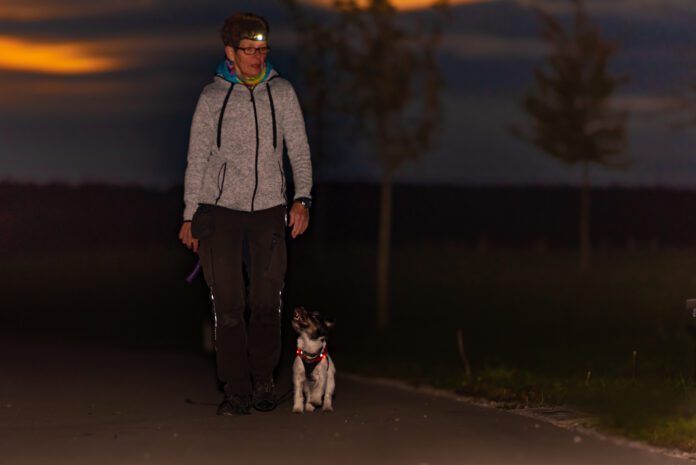Cats are notorious for being able to see at night, but what about dogs? How well can dogs see in the dark? Is their night vision better than ours? The answer is yes, dogs can see much better at night than we can for several reasons.
One is the way their eyes glow in the dark when light shines on them. That shiny surface in their eyes is known as the tapetum lucidum: the reflective tissue beneath the retina that causes glowing eyes in pictures or at night. It acts as a mirror to reflect light onto the retina, enabling dogs to see with less light.
Dog’s eyes have many of the same features as ours: a cornea, iris, pupil and lens and retina. The cornea focuses and transmits light through the pupil (controlled by the colored iris) to the lens, which focuses the image further. The image is then sent onto the retina, converted into electrical signals and sent to the brain via the optic nerve.
What helps dogs have night vision?
In addition to the tapetum lucidum, our dog’s eyes have a couple of other things we don’t that help with night vision:
- Pupil size: Dogs have much larger pupils than humans. The dilation and constriction of the pupil controls the amount of light entering the eye. The larger the pupil, the more light can enter the eye, the greater potential for vision, especially when light is limited.
- Rods: Most domestic mammals, including dogs, have rod-dominated retinas, meaning their eyes are geared toward seeing at night (as opposed to cones, which help with daytime vision). We humans also have more rods than cones, but we don’t have nearly as many as dogs do, hence their ability to see better at night.
Do dogs have better night vision than humans?
While dogs can’t see in pitch-black darkness, they do see lots better than we can in low light. But when it’s very dark inside your house or outside (when there is no moonlight, streetlights, or light pollution from other urban lights), your dog will be nearly as blind as you are! It’s helpful to turn on a nightlight when indoors or use a flashlight when walking outdoors when it’s pitch-back, so your canine pal can see better — and do a better job of guiding you!





